Army Air Corps World War II Highland, IN Flight date: 09/16/21
By Kent Noorlag, Honor Flight Chicago Veteran Interview Volunteer
Mr. Bernius was born in Watertown, CT on October 3, 1924 and is the youngest of three. His older brother Charles also served during WWII in the Army. Ed was always interested in airplanes and graduated in 1942 from Leavenworth High School in Waterbury Connecticut.
Prior to being drafted, Ed worked at United States Rubber as an electrical equipment installer and technician. After receiving three deferments as the wage earner of the family, Ed reported to Fort. Devens in Massachusetts. He had excellent 30/20 eyesight and was actively recruited by the Army Air Corps. He was sent to Greensburg, NC for flight officer training, riding in style in a Pullman car!
On May 1, 1944, he went to Harlingen Air Force Base, TX where his flying time began on the AT-18 aircraft. His training continued as a tail gunner on a B-24. Early on, his technical aptitude was evident so he began radar training.
Ed recalls one eventful training flight on May 14, his B-24 crew was flying and they noticed a loose gas cap on the wing. It began leaking fuel, about 300 gallons, however the ball turret gunner was not aware and the crew feared he may fire his guns potentially starting a fire! As the crew was preparing to jump, they were able to get his attention; they were relieved and able to safely land. In August of 1944, he went on to Kearney, Nebraska for training on the B-17 and B-24 bomber aircraft. In October of 1944, he had his first flights in the B-29 Superfortress as the Radar Observer. Ed always felt he had the knack to know where he was going and how to get his crew home safely – he took great pride in that. At first the radar equipment didn’t always work as well as you would expect and Ed would take the initiative to figure it out, a tremendous asset to the crew.
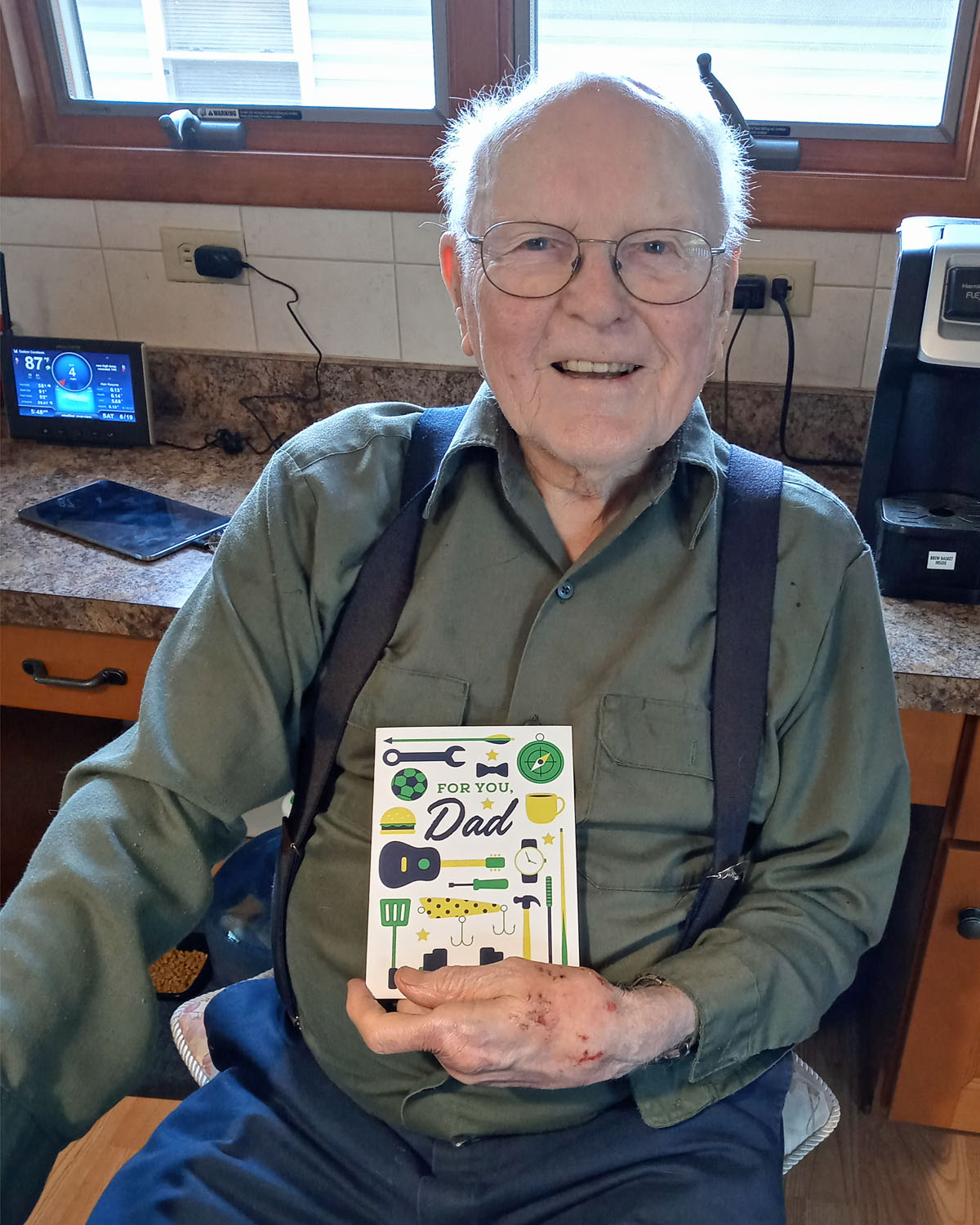
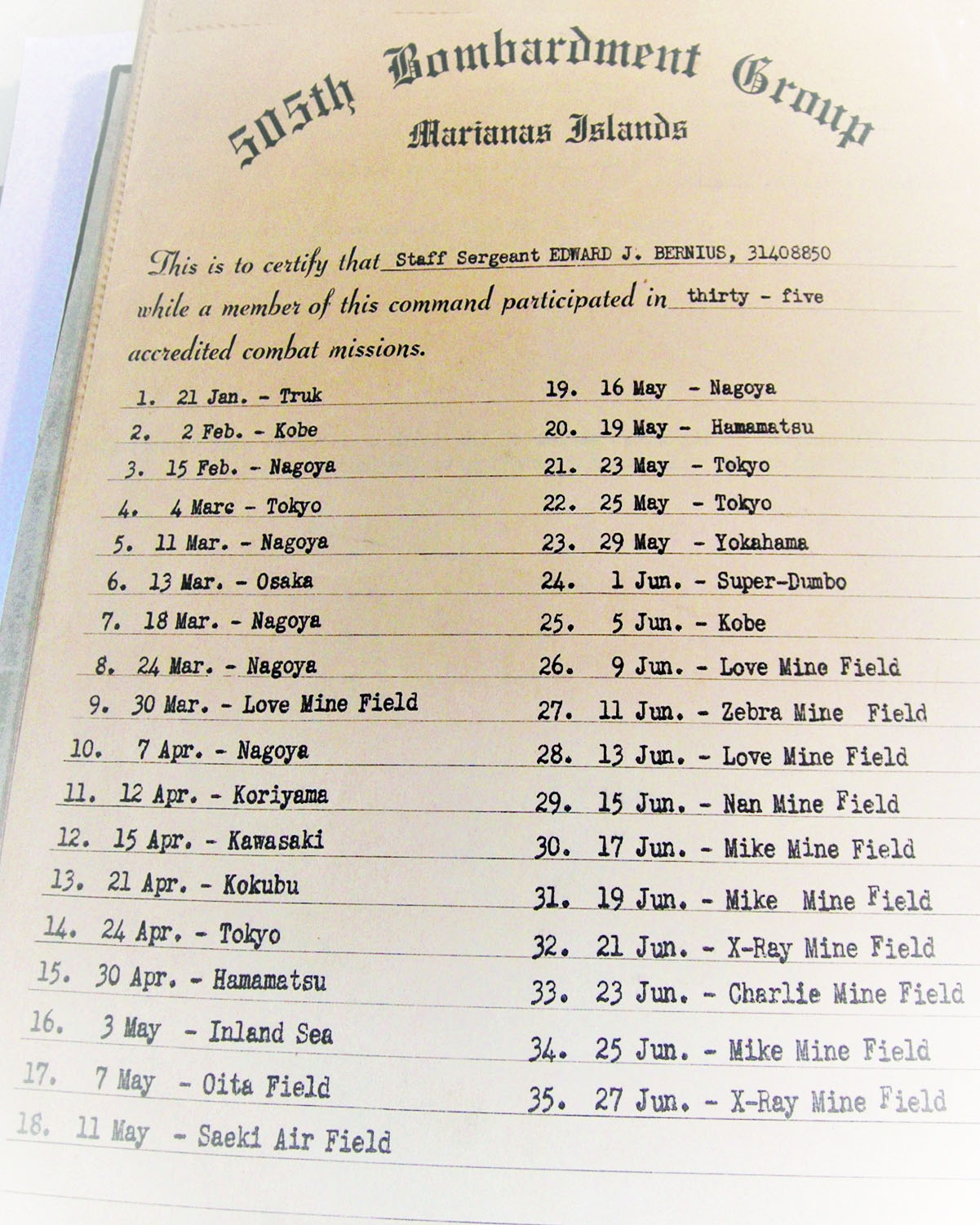
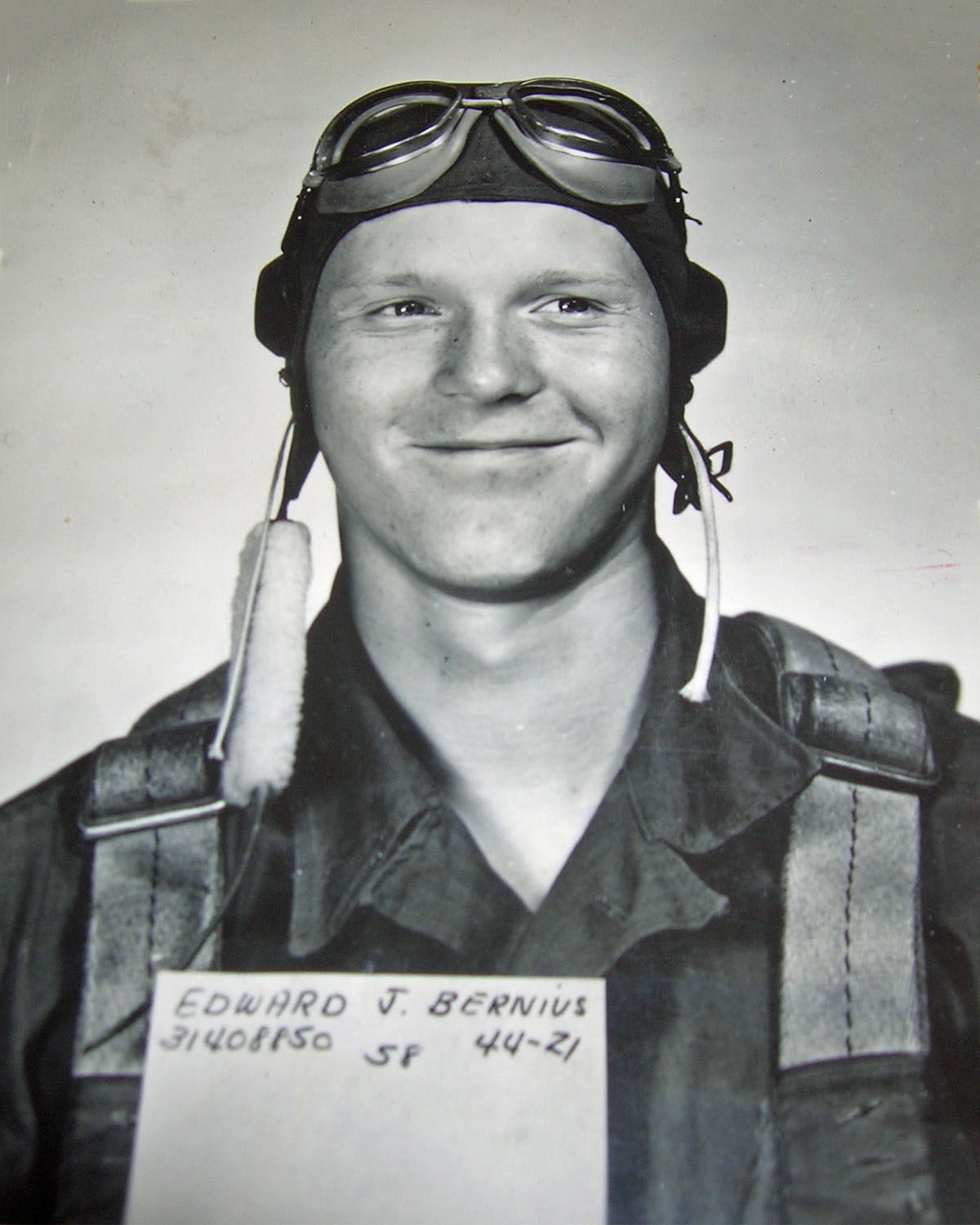
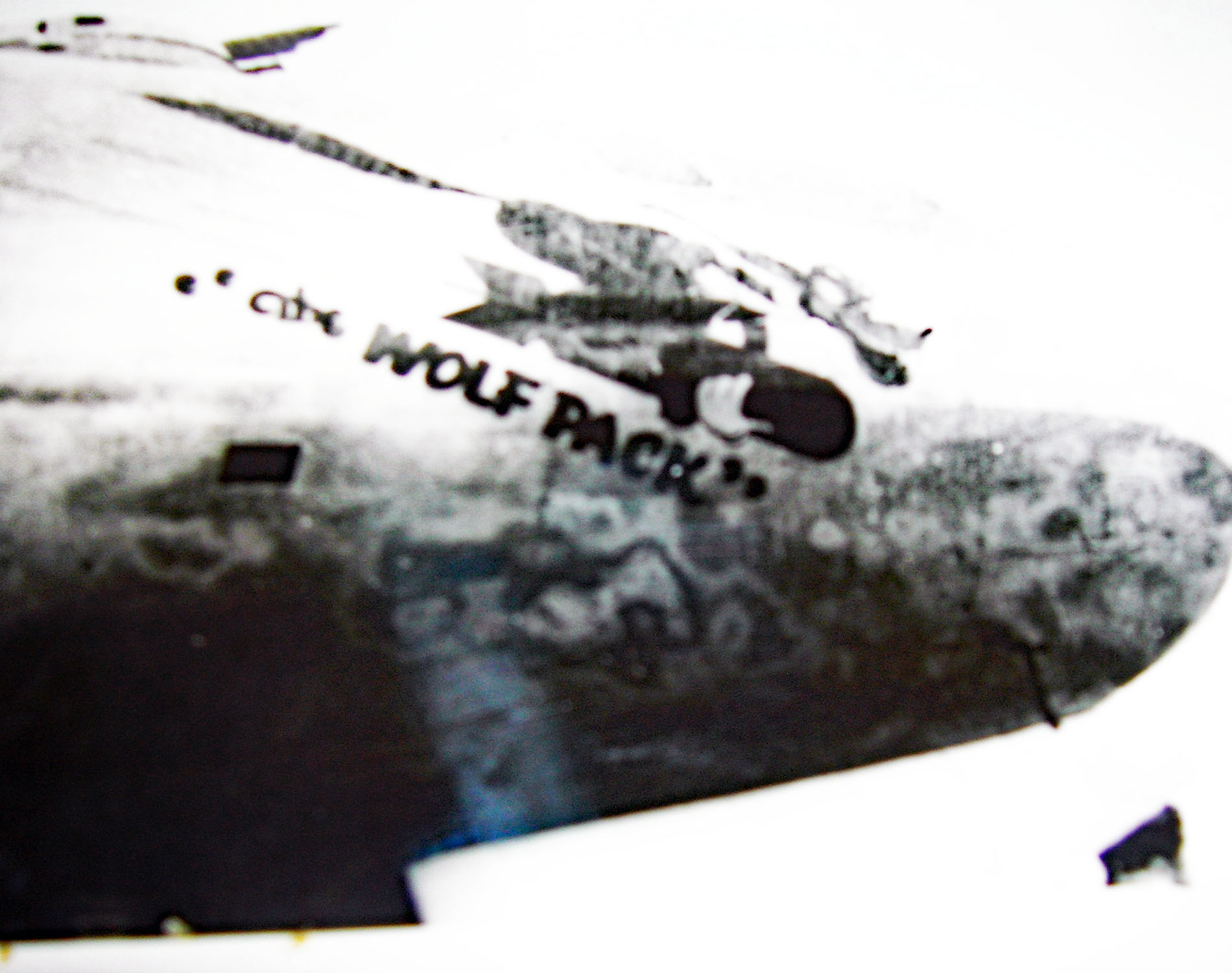
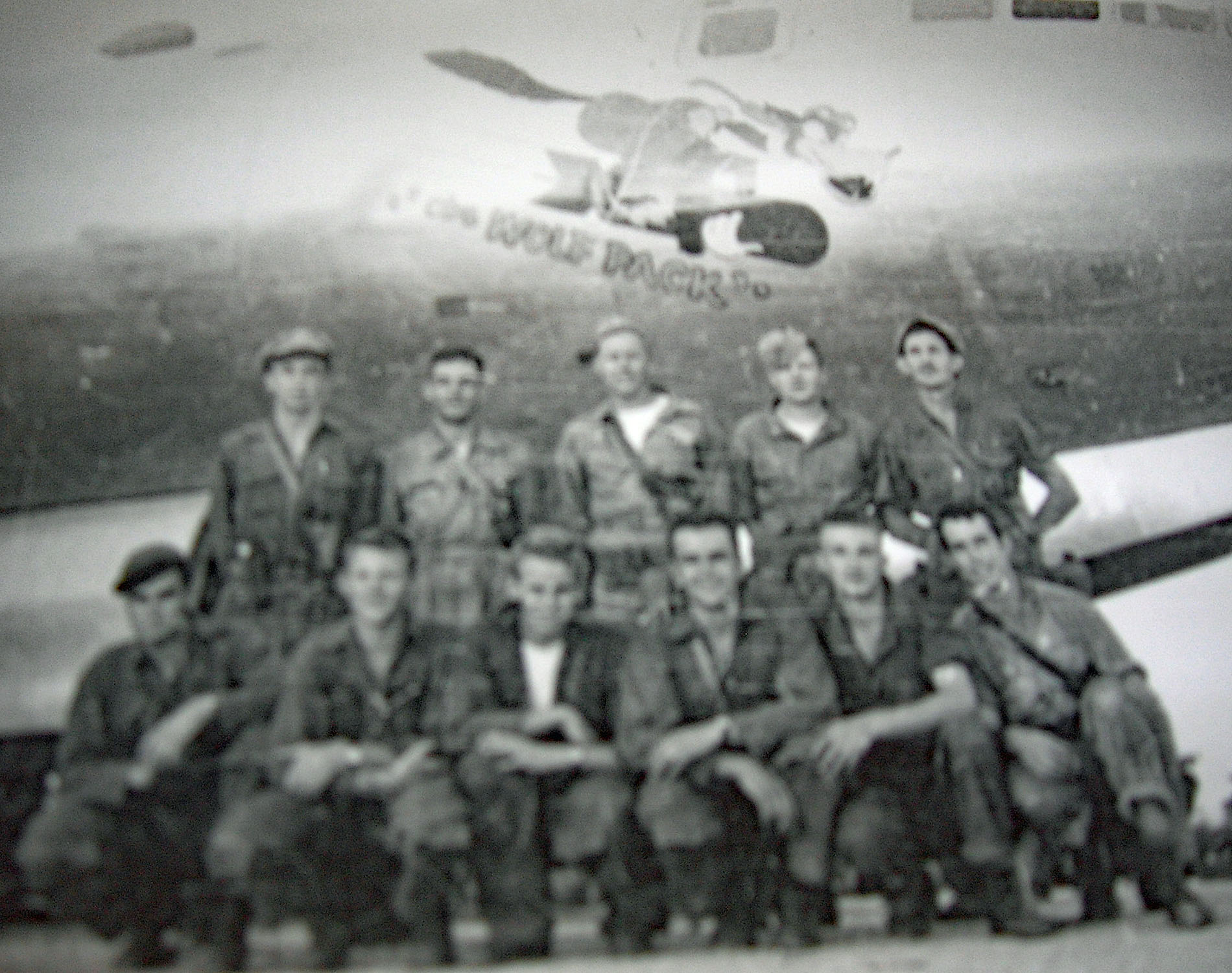
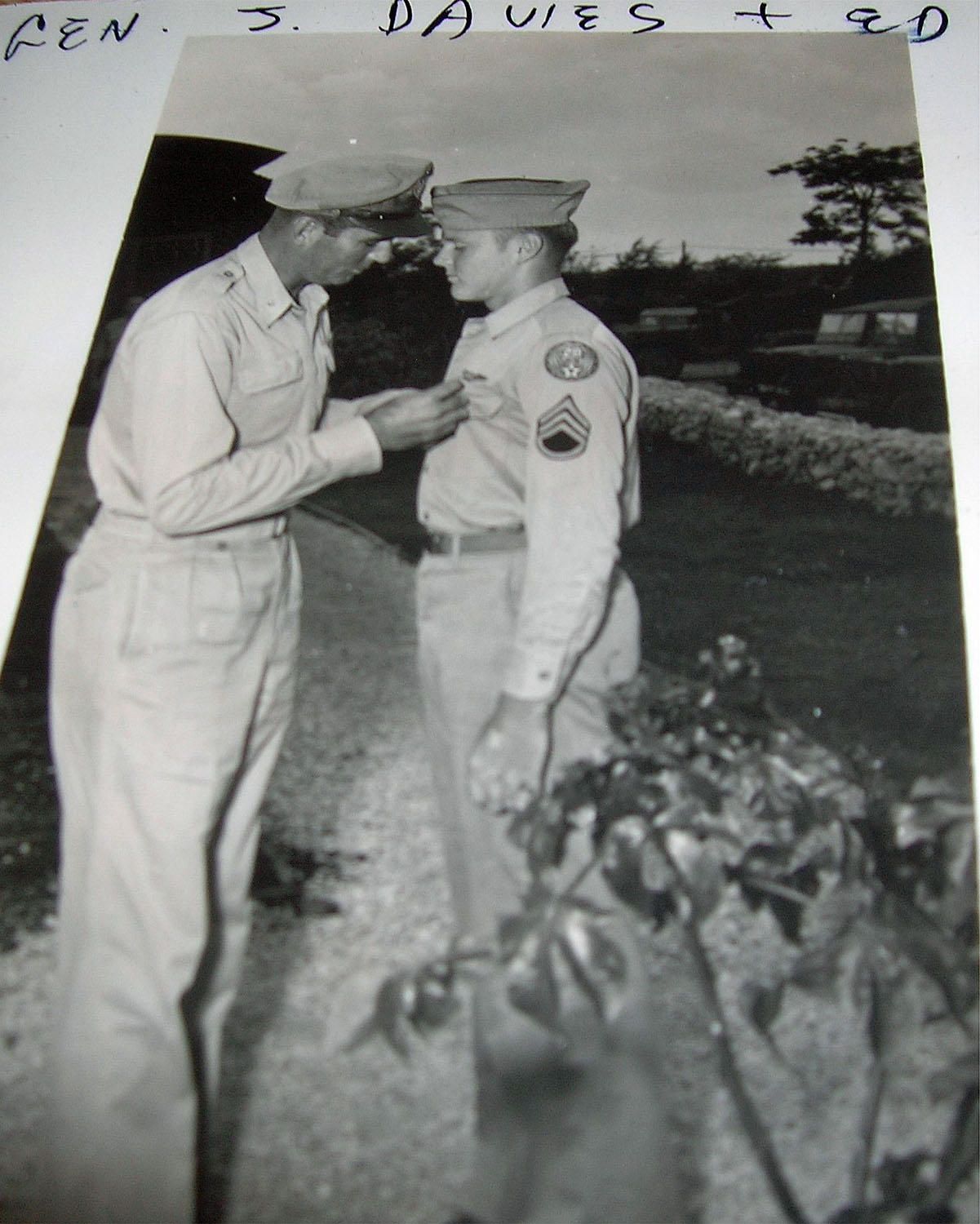
After training flights around the United States as part of the 505th Bombardment Group, in late 1944 Ed was deployed to the Pacific Theater of Operations and assigned to the XXI Bomber Command 313th Bombardment Wing in the Northern Mariana Islands. The crew was to be stationed at North Field, Tinian and Ed calibrated the plane for the journey ahead. Leaving the mainland from Sacramento, there were stops in Honolulu, Kwajalein Atoll, and Saipan before arriving on base at Tinian Island. They arrived on December 23rd, greeted with C-rations for dinner. He quickly learned that the Navy Seabees had all the goods and once they connected with them, their Christmas dinner included turkey and all the fixins!
On January 5th, 1945, they began training missions to Guguan Island, and later to Pagan Island, calibrating airspeed and firing all guns. Everything was coming together… the training, equipment and the confidence for many successful missions. As was customary at the time they even named their B-29 “The Wolf Pack.”
Staff Sergeant Bernius entered combat on January 21, 1945 striking the Truk Islands. The first mainland Japan combat mission was February 4th. They had to turn back 25 miles short due to engine troubles, however Ed kept the radar working accurately.
The 505th then began flying very long-range strategic bombardment missions over the Japanese Home Islands, attacking military, industrial and transportation targets. They switched to night incendiary raids attacking major Japanese cities in the spring of 1945, causing massive destruction of urbanized areas. Staff Sergeant Bernius and crew were attacked by fighters and flew through numerous flak bombs. Their B-29 was hit numerous times, but only once did a crew member get injured, a 20mm to the tip of his finger.
On June 27, 1945, they began a 14-hour mission laying the minefields in Shimonoseki Strait, a narrow waterway between Kyushu and Honshu. At the time, it was considered the single most vulnerable point in the enemy’s shipping position since it was crucial to movement on the Inland Sea and along Japan’s east coast.
This successful mission concluded his 35th combat mission and meant he was headed home. Before Staff Sergeant Bernius left, he received the Distinguished Service Cross, an incredible honor which was pinned on him by General James H. Davies.
Ed flew to Saipan and picked up a passenger plane to Oahu and after a couple days headed to San Francisco. From there it was another train ride, but this time in a box car not a Pullman car! At least it was fitted with sleeping bunks for the trip across the Rockies. It was a warm summer but he did not care as he was finally going home after an incredible journey around the world in service to his country.
Following his discharge, as a 23 year old electrical technician, Ed embarked on another journey around the United States. For 40 years, he worked as a contractor on many projects including the Delaware River Nuclear Plant #2 and Stevenson Dam on the Housatonic River in Connecticut.
His tremendous attention to detail rewarded his B-29 crew with safe guidance and a rewarding career at home.
Ed, we thank you for your dedicated service. Enjoy your well-deserved trip to Washington D.C.!


